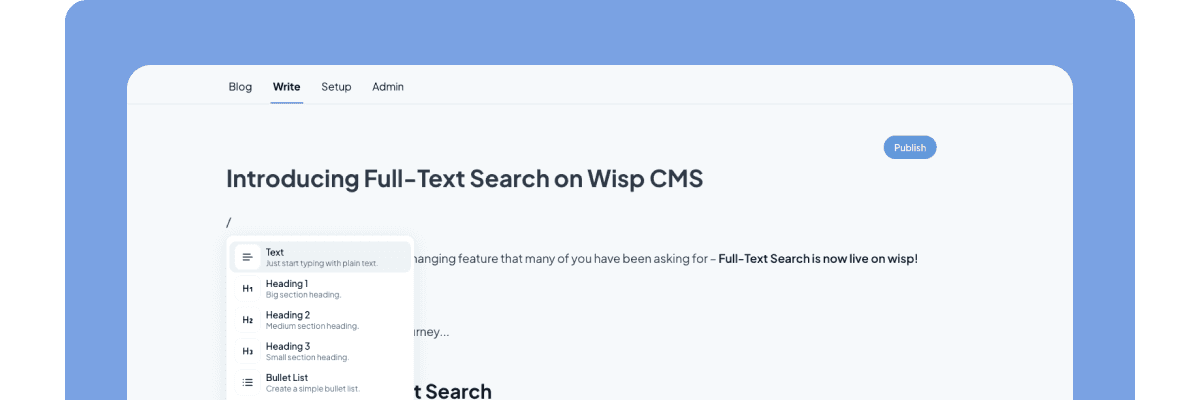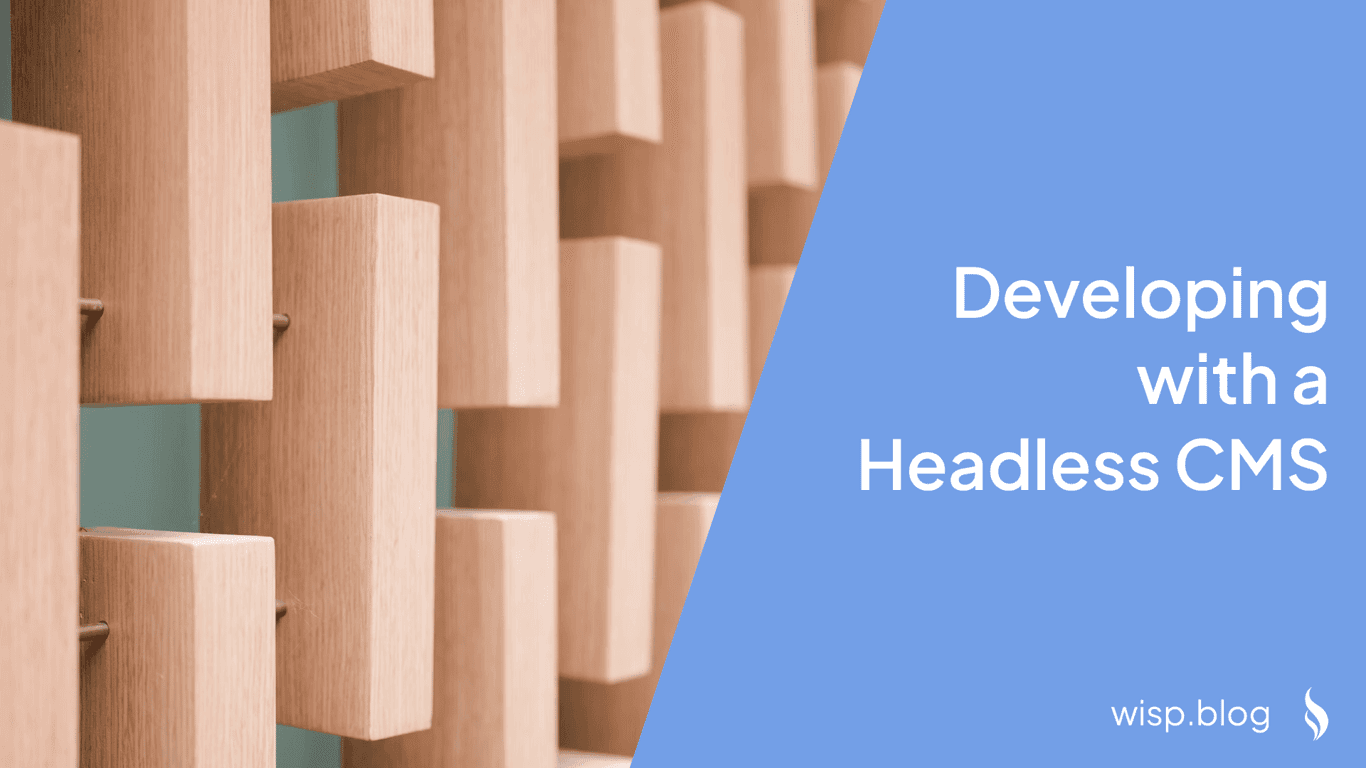
In today's digital-first world, managing and delivering content efficiently is crucial. This has led to the evolution of Content Management Systems (CMS), which are vital for businesses looking to create, manage, and distribute digital content across various channels. CMS platforms have evolved significantly over the years, with decoupled and headless CMS architectures emerging as key players in this space. This article aims to provide a detailed comparison of decoupled CMS and headless CMS, helping you make an informed decision on which one is the best fit for your needs.
Understanding CMS Architectures
Traditional CMS
A traditional CMS integrates both the frontend and backend into a single system. This means that content creation, storage, and presentation are tightly coupled. Popular examples include WordPress, Squarespace, and Joomla.
Limitations of Traditional CMS:
Limited Flexibility: Customizing the frontend often requires significant changes in the backend and vice versa.
Scalability Issues: Scaling a traditional CMS can be challenging due to its tightly coupled architecture.
Deployment Risks: Releasing updates can pose risks, potentially affecting the entire system.
Decoupled CMS
A decoupled CMS separates the backend (where content is created and stored) from the frontend (where the content is presented). The content is delivered from the backend to the frontend via APIs. Unlike headless CMS, a decoupled CMS comes with an optional frontend presentation layer.
Architecture of Decoupled CMS:
Backend: Content creation and management.
Frontend: Optional presentation layer or templates for content delivery.
API: Connects the backend to the frontend and other channels.
Headless CMS
A headless CMS, as the name suggests, is a type of decoupled CMS that completely lacks a frontend presentation layer. Instead, it focuses solely on content management and storage, delivering content via APIs to any frontend or channel.
Architecture of Headless CMS:
Backend: Content creation and management.
API: Delivers content to any frontend, platform, or device.
No Frontend: The frontend is built separately using preferred technologies.
Key Differences Between Decoupled and Headless CMS
Flexibility and Customization
Decoupled CMS: Offers predefined templates and tools for structured content editing and presentation. It provides a mix of flexibility and user-friendly options for content creators.
Headless CMS: Provides full freedom to developers to choose frontend technologies and frameworks, offering maximum flexibility and customization.
Future-Proofing
Decoupled CMS: Allows redesigning the frontend without impacting the backend, making it future-ready while still offering some level of predefined structure.
Headless CMS: Supports seamless integration with new technologies and channels, ensuring the system is adaptable to future needs.
Content Delivery
Decoupled CMS: Utilizes APIs to deliver content but may also include a frontend presentation layer, making it easier to manage content previews.
Headless CMS: Delivers content exclusively via APIs, requiring frontend developers to design and implement the presentation layer.
Advantages and Disadvantages
Advantages of Decoupled CMS
Flexibility with Frontend and Backend: Allows flexibility with separate frontend and backend while still offering some publishing tools.
User-Friendly Templates: Predefined templates and tools make it easier for non-developers to manage content.
Future-Proof Design: Can redesign the frontend independently of the backend.
Enhanced Performance: Improved efficiency and resource utilization by decoupling content delivery.
Disadvantages of Decoupled CMS
Requires Developer Expertise: Customization and advanced features require skilled developers.
Limited Documentation: May lack extensive documentation and support.
Not Ideal for Complex eCommerce: May require additional coding for complex eCommerce functionalities.
Complex Configuration: Setting up and managing a decoupled CMS can be more complex compared to traditional CMS.
Advantages of Headless CMS
Exceptional Flexibility and Customization: Developers can use any frontend technologies and frameworks, offering maximum customization.
Omnichannel Content Delivery: Seamless content distribution across multiple channels and devices via APIs.
Lower Overall Costs: Faster website building and updates using existing tech stacks via APIs.
Enhanced Security: The decoupled nature reduces the risk of DDOS attacks.
Better Performance: Efficient content delivery and improved site performance due to reduced backend load.
Disadvantages of Headless CMS
Requires Frontend Development Expertise: Needs skilled developers for frontend design and implementation.
Higher Complexity and Maintenance: Managing multiple codebases and integrating various technologies can be complex.
Lack of Built-In Content Preview: Requires additional development to enable live content previews.
Potential Higher Costs: Implementation and maintenance costs can be high due to the need for multiple technologies.
Use Cases and Suitability
Decoupled CMS
Web-Based Projects: Ideal for projects primarily focused on web channels where predefined templates can be utilized.
Developer Resources: Suitable for organizations with experienced developers familiar with CMS platforms.
Non-eCommerce Businesses: Best for companies not heavily reliant on complex eCommerce functionalities.
Headless CMS
Multi-Channel Content Distribution: Perfect for businesses requiring content distribution across various channels, including mobile apps, IoT devices, and websites.
Customization Needs: Suitable for organizations needing extensive customization and flexibility in frontend technologies.
Content-First Strategy: Ideal for projects where content creation and management are prioritized and tailored to different user experiences.
Choosing the Right CMS
Factors to Consider
Project Requirements and Goals: Understand the specific needs and objectives of your project, including the type of content, distribution channels, and user experience.
Scalability and Future Growth: Evaluate the potential for growth and the ability to scale the CMS to accommodate increased traffic and content volume.
Development Team Expertise: Consider the skills and preferences of your development team when it comes to frontend technologies and CMS platforms.
Budget and Timeline: Analyze the cost implications and project timelines, as some CMS architectures may require more investment in terms of time and resources.
Real-World Examples
Decoupled CMS Examples
The Economist: Re-engineered its core systems to support APIs and microservices, enabling real-time multi-channel content delivery.
Vodafone: Uses a decoupled CMS to provide a seamless digital experience and real-time content delivery to point-of-sale systems.
Headless CMS Examples
Freddie's Flowers: Utilized a headless CMS to expand internationally and offer multi-language support without depending heavily on developers.
Qatalog: Improved marketing team efficiency and compatibility with their tech stack by integrating a headless CMS for better content management.
Conclusion
Choosing between a decoupled CMS and a headless CMS depends on your specific business needs, technical capabilities, and content distribution goals. Decoupled CMS offers a balanced approach with flexibility and user-friendly tools, making it ideal for web-focused projects with existing developer resources. On the other hand, headless CMS provides exceptional customization and omnichannel support, perfect for businesses seeking extensive control over content delivery across multiple platforms.
As you consider your options, it's essential to evaluate factors such as project requirements, scalability, development expertise, and budget. By understanding the strengths and limitations of each CMS architecture, you can make an informed decision that aligns with your objectives.
For those looking to explore a powerful CMS solution, Wisp CMS offers robust capabilities to manage and distribute your content efficiently. Visit Wisp CMS to learn more and start your journey towards seamless content management today.



